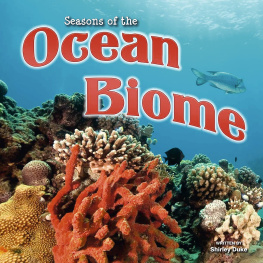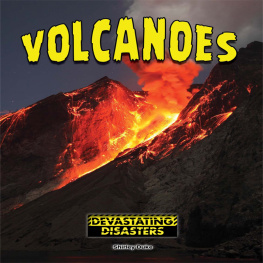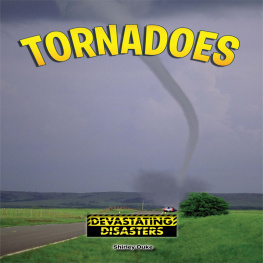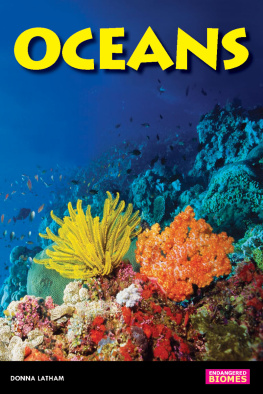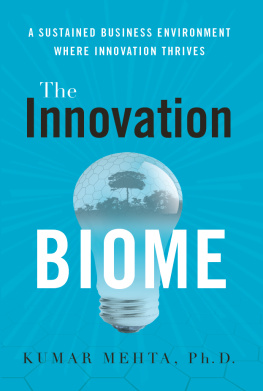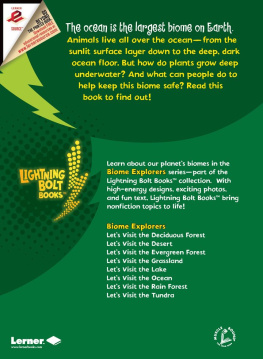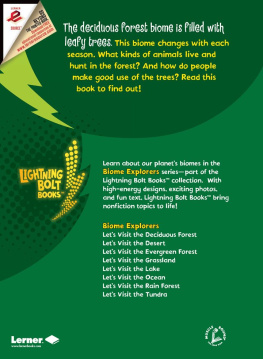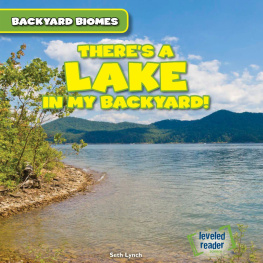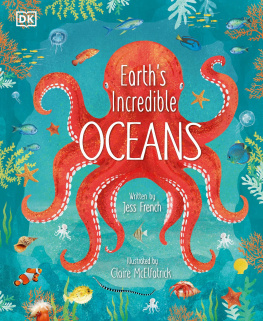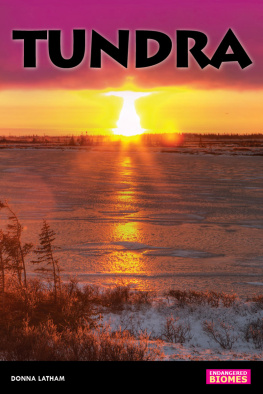
Teaching Focus:
Using Text Features
Find a diagram
in the book. What
information can
you learn from the
diagram?
Level: I Word Count: 381 Words
100th word: top page 8
Tips for Reading this
Book with Children:
1. Read the title and make predictions about
the story.
Predictions after reading the title have students
make predictions about the book.
2. Take a picture walk.
Talk about the pictures in the book. Implant the
vocabulary as you take the picture walk.
Have children nd one or two words they know
as they do a picture walk.
3. Have students read the 1st page of text with you.
4. Have students read the remaining text aloud.
5. Strategy Talk use to assist students while reading.
Getyourmouthready
Lookatthepicture
Thinkdoesitmakesense
Thinkdoesitlookright
Thinkdoesitsoundright
Chunkitbylookingforapartyouknow
6. Read it again.
7. Complete the activities at the end of the book.

Written by
Shirley Duke
Scan for Related Titles
and Teacher Resources
Seasons of the
rourkeeducationalmedia.com

2014 Rourke Educational Media
All rights reserved. No part of this book may be reproduced or utilized in any form or by any means, electronic or mechani
-
cal including photocopying, recording, or by any information storage and retrieval system without permission in writing
from the publisher.
www.rourkeeducationalmedia.com
PHOTO CREDITS: Cover: stephan kerkhofs; Title Page Zhukov; Page 4 Eric Isselee and Merkushev Vasiliy; Page 5
James W. Photography and VanHart; Page 6 Specta; Page 6a worldswildlifewonders; Page 7 Kasparart; Page 9
Marzanna Syncerz; Page 10 NOAA; Page 11 Clinton Hastings; Page 12 melissaf84; Page 13 Shannon Heryet;
Page 14 Bruno Ismael Stacy Barnett; Page 15 ystein Paulsen; Page 16 trekandshoot; Page 17 Danette Ander
-
son; Page 18 angelo lano; Page 18a worldswildlifewonders; Page 19 Vladimir Melnik; Page 19a Kim Briers,
Brendan Hunter; Page 20 Rich Carey; Page 21 Hurst Photo
Edited by Jill Sherman
Cover design by Renee Brady
Interior design by Nicola Stratford bdpublishing.com
Library of Congress PCN Data
Seasons of the Ocean Biome / Shirley Duke
(Biomes)
ISBN 978-1-62169-895-1 (hard cover)
ISBN 978-1-62169-790-9 (soft cover)
ISBN-13: 978-1-73160-909-0 (e-Book) ISBN-10: 1-68444-164-1 (e-book)
Library of Congress Control Number: 2013936811
Rourke Educational Media
Printed in the United States of America,
North Mankato, Minnesota
Also Available as:
customerservice@rourkeeducationalmedia.com PO Box 643328 Vero Beach, Florida 32964
rourkeeducationalmedia.com
Synched Read-Along Version by:
Triangle Interactive LLC
PO Box 573
Prior Lake, MN 55372

Deep and Shallow
Earth Tilts
Fall Changes
Watch Out for Winter!
New Life
The Future of Oceans
Study Like a Scientist
Glossary
Index
Websites
About the Author

What is the ocean like? Saltwater waves
pound the shore. The ocean might look
empty from your view on dry land. But it is
lled with life.
Oceans have:
Salt water.
Shallow and deep water
zones.
Warm and cold
temperatures.
Many kinds of plants and
animals.
Seal

The Worlds Oceans
Pacic
Ocean
Atlantic
Ocean
Southern Ocean
Arctic Ocean
Indian
Ocean

You may see algae , or seaweed, drifting
on top of the water. Some life swims in the
water. Other kinds ride the ocean waves.
Shallow coral reefs, aquatic plants, and
kelp forests use the Sun to make food.
Kelp

Did you know that sunlight cannot reach
the deep ocean oor? The deep water
stays cold. Yet, deep water has life suited
for the dark ocean bottom.
The anglersh has a spine off its nose
with a tip that glows to attract food
near the black ocean oor.

Earth tilts as it spins to make day and
night. Summer comes when Earth tilts toward
the Sun. It warms the top of the water.

In the summer, the Sun shines longer,
which lets plants make more food.
Phytoplankton live in the oceans. These tiny
plants feed much of the life in oceans.
They make food using the Suns light.
Phytoplankton

Animals move to the cooler water
near the poles in summer. Why? More
food lives there.
Whales move to cold water
in summer. They follow
their food north.
Humpback Whale

Days grow shorter in fall. The water begins
to cool. Some animals return from the cold
waters in the north. Whales move to warmer
water to have their babies in the fall.
To have their babies, whales must

